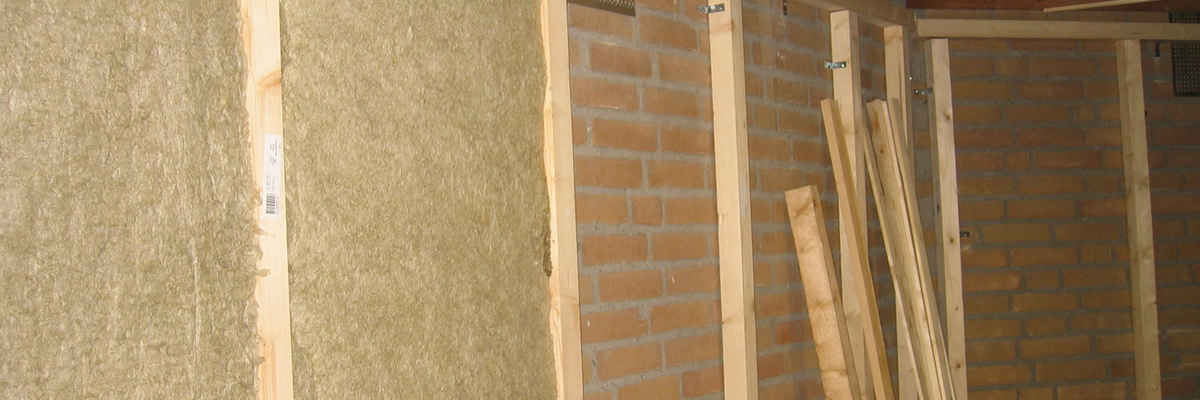What are the benefits of rockwool insulation?
It is very compact, which makes installation easy. Unlike traditional insulation, it doesn't settle over time, so you can use it for radiant floor heating systems. Finally, newer versions are made to be all-natural and non-toxic materials.
Rock wool has not been found to produce dust or offgassing when eroded by weathering or burnt in a fire event. Rock wool is classified as an "inorganic" material by the USFA (U.S. Fire Administration), meaning that all of its elements are nonmetallic minerals extracted from rock formations throughout the world without heavy metals such as arsenic and lead present. Asbestos was also listed as an "inorganic" material until it was declared hazardous to human health .
In rock wool production, the rock is melted at a very high temperature and spun into fine threads. When these fibers are released from the rock-molten glass they solidify as fibers of insulation which have a crystalline structure similar to natural rock salt. The exceptionally high melting point of rockwool allows it to be used safely in building materials for a variety of applications even if a fire occurs, including exposure to direct flame impingement with limited heat exposure under temperatures up to 1875 degrees Fahrenheit (1000 degrees Celsius).
Asbestos was also listed as an "inorganic" material until it was declared hazardous to human health.
In rock wool production, the rock is melted at a very high temperature and spun into fine threads. When these fibers are released from the rock-molten glass they solidify as fibers of insulation which have a crystalline structure similar to natural rock salt. The exceptionally high melting point of rockwool allows it to be used safely in building materials for a variety of applications even if a fire occurs, including exposure to direct flame impingement with limited heat exposure under temperatures up to 1875 degrees Fahrenheit (1000 degrees Celsius).
Most rockwool is not treated with borates or other chemicals; however, some rockwool is treated with borate compounds such as sodium pentaborate and boric acid for use in passive fire protection systems such as rockwool blankets applied over steel beams . Rock wool has been manufactured since the mid-nineteenth century; rockwool is used in the insulation of buildings, tunnels, silos, ships and hot water tanks.
Rockwool has not been found to produce dust or offgassing when eroded by weathering or burnt in a fire event . Rock wool is classified as an "inorganic" material by the USFA (U.S. Fire Administration), meaning that all of its elements are nonmetallic minerals extracted from rock formations throughout the world without heavy metals such as arsenic and lead present. Asbestos was also listed as an "inorganic" material until it was declared hazardous to human health .
Call Now - (707) 562-0911
Get Your Free Quote!

How does rockwool insulation work?
Rockwool insulation works by taking advantage of the property of wool fibers to lock in air. When loose "rocky" rockwool fibers are restrained by a fabric material, their natural ability to take-up and release water vapor can be exploited to regulate temperatures.
Rockwool is made from naturally occurring minerals such as limestone or dolomite sourced primarily from mountain regions with naturally high levels of sulfuric acid (such as Iceland), which reacts with calcium carbonate (limestone) and silica (dolomite/sandstone) during heating under pressure at about 750 degrees Fahrenheit. The dirtiest part of the process is that after extracting these chemicals, particulates known as heavy metals then need to be filtered out.
First rockwool is shaped into thin-tube like fibers, then treated with sodium silicate (water glass) to chemically bind the rockwool to another set of rockwool fibers. The result? Soft rockwool that can be cut and shaped into pieces ready for insulation work.
Rockwool is said to have many benefits over fiberglass insulation including better resistance to fire, rodents and insects. It also reduces noise pollution across a range of frequencies, absorbs sound well and has higher thermal properties than fiberglass.
However, rockwool does have its downsides. Firstly, it's made mostly from sand which makes rockwool perhaps not an ideal material choice in areas where there would be enough water for rock wool to "melt" in. Also rockwool has very high pH which can be dangerous for workers and potentially cause irritation, especially if you're working with rockwool insulation that's still moist. Finally rockwool materials are not recyclable.
So rockwool might not be the best choice if your home is close to the coast or prone to flooding or has water leaks, but it could certainly make sense considering rockwool's low environmental impact relative to fiberglass ... especially when rockwool is made from recycled glass!
Call Us Now - (707) 562-0911
